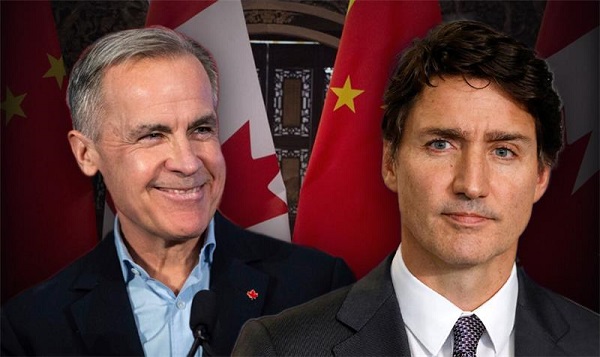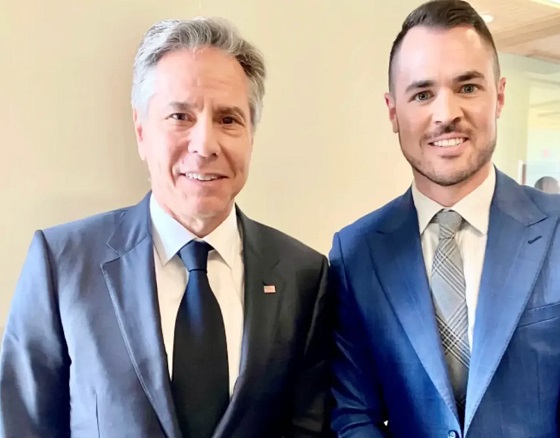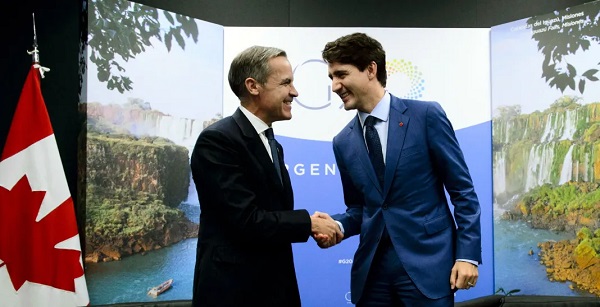MacDonald Laurier Institute
Bureaucrats should not be arbiters of our online world

From the Macdonald Laurier Institute
By Leonid Sirota and Mark Mancini
When it comes to regulating the internet, Ottawa tells Canadians to simply “trust the experts.”
The federal government has pursued a far-reaching internet regulation agenda. This includes the Online Streaming Act (previously known as Bill C-11) and the Online News Act (previously known as Bill C-18). Both are ostensibly designed to force foreign online platforms – streaming ones such as Netflix, Disney+, and YouTube in the former case, Google and Facebook in the latter – to provide support, mainly but not exclusively financial, to Canadian cultural and journalistic producers. The most recent addition to this regulatory programme, Bill C-63, partly targets online platforms too, but its reach is broader. It seeks to prevent a range of “online harms” – from the distribution of child pornography to hate speech.
These legislative endeavours have attracted commentary from all corners, not least from Macdonald-Laurier Institute experts. Much of the discussion has been critical of the government’s policies on the ground of their unwisdom, immorality, and possible unconstitutionality.
But we would like to take a different tack here and focus not on the ends pursued but the means employed by C-11, C-18, and C-63: the empowerment of administrative agencies as rule-makers and arbiters of Canadians’ online world. While they purport to regulate new technologies, business models, and cultural forms, these policies are a throwback to an old philosophy of government that subverts fundamental constitutional principles: democracy, the separation of powers, and the rule of law.
It is worth beginning with a brief restatement of what these principles mean. Democracy means the exercise of political power – law-making, in particular – by either the people themselves or, more commonly, through elected representatives. The separation of powers means that the making and execution of laws are different functions, not to be confused or conflated, and that adjudication of disputes in accordance with the law is a separate function still. The rule of law is a complex idea, but perhaps the pithiest formulation of its core meaning belongs to economist and political philosopher F.A. Hayek: it “means that government in all its actions is bound by rules … which make it possible to foresee how the authority will use its coercive powers in given circumstances.”
Contrast this with the philosophy underpinning the government’s approach to internet regulation. This philosophy permeated the report of a panel commissioned by the federal government at the end of the last decade to propose reforms to Canada’s regulation of the internet. Published in January 2020, “Canada’s Communications Future: Time to Act” called for legislation that would “provide sufficient guidance to assist the [Canadian Radio-Telecommunications Commission (CRTC)] in the discharge of its duties, but sufficient flexibility for it to operate independently in deciding how to implement sector policy. To achieve this, legislative statements of policy should set out broadly framed objectives and should not be overly prescriptive.” Translation: the democratically elected Parliament should not bother with making actual rules; that would be the job of the bureaucrats at the CRTC. They know better – both what the rules should be and how to apply them. Parliament is their enabler, not their master, and the courts should defer to their judgments.
In fairness, the legislation ultimately enacted or considered by Parliament does not go quite as far in empowering the CRTC or a new Digital Safety Commission (DSC) at the expense of Parliament as that report had urged. But it does go far. Probably the most important example of this concerns the amenability of user content – the average TikTok video, rather than Netflix – to CRTC regulation. This was one of the major points of contention when Bill C-11 was before Parliament. The Bill itself – despite claims by the government to the contrary – quite clearly permitted the CRTC to regulate user content, though it did not require it to do so. Amendments to remove this discretionary power were roundly rejected at the government’s insistence, in favour of leaving the user content question open for decision by the CRTC – only for the government to issue a Policy Direction to the CRTC “not to impose regulatory requirements” on user content.
The real scope of the law, and hence the degree of its impact on the freedom of expression of ordinary Canadians, will thus be fleshed out through the interplay of policy directions from Cabinet and CRTC consultations and orders. The same goes for various other aspects of the Online Streaming Act, such as Canadian content and discoverability requirements to be imposed on online platforms. The Online News Act, had it functioned as intended, would similarly have given the CRTC the final say over the extent of the obligations of the platforms subject to it. (In reality, one of these two platforms instead banned the publication of news content, and to avoid the other doing the same thing, the government made a deal with it that eviscerated the act.) And under Bill C-63, the decisions as to whether an online platform’s policies are “adequate to mitigate the risk that users … will be exposed to harmful content” is similarly within the remit of the DSC, with little if any guidance from Parliament as to what is in fact required.
This way of doing things undermines parliamentary democracy as anyone, except some scholars of administrative law would understand it. The people elected to make laws do not, in fact, make them in any meaningful way. On the contrary, they pawn off responsibility for contentious policy choices to administrators; they enact no more than empty shells, politely described as “framework legislation,” full of blanks to be filled out later. This transgression against constitutional principle is compounded when Cabinet makes a mockery of the parliamentary process with its policy flip-flops, which can then be reversed by further Cabinet fiat. The excuse typically given for this dereliction of duty is that the problems to be addressed are too complex for parliamentarians to deal with, which only makes one wonder at their nerve to have put themselves forward to do a job they are concededly unqualified for in the first place.
Enthusiasts for the internet agenda may say that it remedies its democratic deficiencies by consulting with those subject to new registration requirements. Yet CRTC consultations on the Online Streaming Act provided no more than a shabby ersatz of what democracy is supposed to mean – debate and discussion in Parliament. The submission period was short, and “industry-focused.” The CRTC ended up issuing orders requiring registration on a range of internet services that meet a $10 million revenue threshold, and the government issued a policy direction to the CRTC instructing that user content not be regulated. The CRTC’s regulatory plan for the Online Streaming Act is still being developed, and will likely involve further decisions about the reach of registration requirements. Whether the DSC does any better – if and when it implements Bill C-63 – remains to be seen. But, in any case, consultations that only include industry players, or some nominal number of users, cannot replicate an engaged and informed Parliament that weighs competing interests. Nor can it replace an engaged and informed citizenry, holding politicians to account for their choices at the ballot box.
Separation of powers fares no better. Instead of Parliament making laws, independent prosecutors bringing charges, and independent courts ruling on them, the CRTC and DSC combine their broad rule-making powers with the ability to both jawbone and outright prosecute online platforms, and to rule on the charges. The Canadian Civil Liberties Association rightly laments “the vast authority bestowed upon” the DSC “to interpret the law, make up new rules, enforce them, and then serve as judge, jury, and executioner.”
Here again, proponents of administrative power think they have an answer. Instead of the old-fashioned institutions wielding divided powers, they say the modern world requires the government’s full authority to be concentrated in the hands of experts. Agencies like the CRTC and, presumably, the DSC have the skills and wisdom to deal with the complex and increasingly difficult online environment. This claim is attractive in part because the layman often cannot comprehend the size and scale of challenges that modern regulation confronts, while politicians are all too often happy to demonstrate their unseriousness and ignorance.
But, in addition to its other problems, the vision of expert administrators who know better is simply unwarranted by the facts. For example, Konrad von Finckenstein, former chair of the CRTC, has told a Senate committee studying Bill C-11 that the CRTC simply does not normally deal with matters of this nature; and that the CRTC will likely need to hire contractors to fulfil its mandate under the legislation. The CRTC is also, by its own admission, not really up to speed when it comes to the universe of online media it is required to regulate under the Online Streaming Act: it has invoked the need to gather information about podcasting to justify its far-reaching registration requirements for platforms that host them. As for the DSC, it will of course be an entirely new bureaucratic structure with no existing expertise at all. Perhaps the government will appoint experts to it. But it doesn’t have to. Bill C-63 imposes no requirements as to the qualifications of the DSC’s members other than their being Canadian citizens or permanent residents. Under the Canadian Radio-television and Telecommunications Commission Act, the same is also true of the CRTC.
Over-reliance on administrative regulation and enforcement undermines the rule of law too, by making the rules applicable to the internet uncertain and their application unpredictable. The legislation relies on vague terms that will only be fleshed out as the agencies that apply it go along, which will discourage innovation, chill expression, and incentivize platforms to take quick action against their users to avoid getting into trouble with the regulators. And if the victims of unfavourable rulings want to challenge them in actual courts, the Supreme Court’s precedents prevent judges from coming to their own independent assessment of what the law requires, but instead require them to yield to the bureaucrats’ interpretations unless these are not “merely” mistaken, but outright unreasonable. Even the requirements of the Canadian Charter of Rights and Freedoms are dissolved in this bureaucratic acid; from the supreme law of Canada, they are diluted into values that must, to be sure, be taken into account, but only as a factor among others.
All this may seem like legalistic pedantry propounded by academics who do not care about the pressing needs of contemporary society. But that impression would be mistaken. It is precisely the government’s disregard for Canada’s constitutional foundations that ultimately ensures that the rules produced for it by its administrative instrumentalities are out of touch.
Instead of legislation reflecting Canada’s public opinion as represented in Parliament, we are to be governed by rules drafted by unrepresentative bureaucrats, potentially influenced by special interest groups with a privileged access to them. Instead of the exercise of coercive power being channelled through institutions with limited remits keeping one another accountable, we are told to trust experts who cheerfully admit having no real expertise to speak of. And instead of the law being predictably and impartially applied by judges who are not invested in the government’s policy and do not depend on government goodwill for reappointment, the law, and the constitution itself, only count insofar as they are consistent with administrative need.
It may be that we are stuck with the administrative state. Although some scholars have made arguments to the contrary, we believe that, as a matter of law, Parliament is entitled to delegate very considerable policy-making powers to agencies such as the CRTC and the DSC. If the government is set on pursuing its regulatory agenda through the old-fashioned means of creating and empowering bureaucratic structures, the courts will not save us, even though, as we have argued elsewhere, they have become rather more skeptical of the administrative state’s claim to be the solution to all the problems of the modern world than they used to be until fairly recently.
But the government having the authority to do something does not mean that doing it would be a good idea. It, and we the citizens, should embrace the judiciary’s skepticism of the vision of government-by-administrator that characterizes the federal government’s plans. More to the point, we should recall what our most important constitutional principles mean. If we are not to erode them, we need to reject the means the government is proposing to employ, as well as, arguably, the ends it is pursuing.
Leonid Sirota is Senior Fellow with the Macdonald-Laurier Institute, and an Associate Professor in the School of Law at the University of Reading, in the United Kingdom, where he teaches public law. His research interests include the rule of law, constitutional interpretation, administrative law, the freedoms of conscience and expression, election law, and other aspects of Canadian and comparative public law.
Mark Mancini, a Senior Fellow with the Macdonald-Laurier Institute, is a Ph.D. candidate at the University of British Columbia, Peter A. Allard School of Law. He holds a J.D. from the University of New Brunswick, Faculty of Law, and an LL.M. from the University of Chicago Law School.
International
Beijing’s blueprint for breaking Canada-U.S. unity

By Stephen Nagy for Inside Policy
For several decades, China has pursued a sophisticated campaign to fracture the world’s most integrated defense partnership—that between Canada and the United States.
Beijing’s strategy goes beyond typical diplomatic pressure: it systematically exploits every Canada-US disagreement, transforming routine alliance friction into seemingly irreconcilable divisions. This has become a degree of magnitude easier under US President Donald Trump, with his mercurial policy shifts towards Ottawa. The revelations about Chinese interference in Canadian elections from the Security and Intelligence Threats to Elections (SITE) Task Force – a body comprised of Canadian government and security officials which monitors elections threats – illuminate only one dimension of this comprehensive assault on North American solidarity.
Beijing’s strategic logic is to divide and conquer. By portraying Canada as sacrificing sovereignty for American interests while simultaneously painting legitimate Canadian security concerns as US-driven paranoia, Beijing paralyzes Ottawa’s decision-making and undermines continental defense cooperation.
The 2018 arrest of Huawei CFO Meng Wanzhou crystallized China’s approach. When Canada honored its extradition treaty with the US by detaining Meng at the Vancouver airport, Beijing immediately framed this routine legal cooperation as evidence of Canadian subservience. Chinese state media didn’t simply criticize the arrest, they specifically portrayed Canada as “a pathetic clown” and “running dog of the US.”
Within nine days, China retaliated by detaining Michael Kovrig and Michael Spavor, holding them for 1,019 days. But Beijing’s messaging revealed its true objective. Chinese diplomats repeatedly demanded Canada “correct its mistake” by defying the U.S. extradition request. Ambassador Lu Shaye explicitly stated Canada could resolve the crisis by demonstrating “independence” from Washington.
The economic pressure followed the same pattern. China banned canola imports from two major Canadian companies in March 2019, citing “pests” but Chinese officials privately linked the ban to the Meng case. When targeting Canadian meat exports, Beijing’s timing again coincided with moments of US-Canada cooperation on Huawei restrictions.
China’s wedge strategy extends beyond retaliation to proactive exploitation of bilateral tensions. During the Keystone XL pipeline disputes, Chinese state media amplified Canadian grievances while offering Beijing as an “alternative partner” for energy exports. When the Biden administration cancelled the pipeline in 2021, Chinese diplomats and media immediately highlighted American “betrayal” of Canadian interests.
Similarly, during US-Canada disputes over softwood lumber tariffs and Buy American provisions, Chinese officials consistently present themselves as more reliable economic partners. The message is always the same: American protectionism harms Canadian workers, while China offers stable market access conveniently omitting Beijing’s own coercive trade practices.
On defense, China exploits Canadian concerns about Arctic sovereignty vis-à-vis the United States. When Washington challenges Canada’s claims over the Northwest Passage, Chinese media amplify these disagreements while positioning Beijing as respecting Canadian Arctic sovereignty – even as China declares itself a “near-Arctic state” and seeks military access to the region.
Recent intelligence revelations confirm China’s systematic attempts to influence Canadian politics specifically to create US-Canada friction. According to CSIS documents, Chinese intelligence assessed that a Liberal minority government would be less likely to follow Washington’s harder line on China. Beijing’s interference operations during the 2019 and 2021 elections specifically targeted Conservative candidates perceived as pro-American on China policy.
The Chinese United Front Work Department cultivates Canadian political and business figures through seemingly innocent organizations. A 2020 National Security and Intelligence Committee report found these groups specifically encouraged narratives about American “bullying” of Canada and promoted “made-in-Canada” foreign policies that coincidentally aligned with Chinese interests.
Chinese diplomats regularly exploit Canadian media to amplify anti-American sentiments. During USMCA negotiations, Chinese officials gave exclusive interviews to Canadian outlets sympathizing with “American strong-arm tactics.” When Canada considered banning Huawei from 5G networks, Chinese embassy officials published op-eds in Canadian newspapers warning against following “US tech hegemony.”
China’s wedge strategy carries profound implications for NORAD and continental defense. By creating friction between Ottawa and Washington, Beijing undermines the trust essential for integrated aerospace warning and maritime domain awareness. Chinese military academics have explicitly written about exploiting contradictions in US-Canada defense relations to complicate American force projection.
The stakes are rising as Arctic ice melts. China’s 2018 Arctic strategy specifically mentions differences between Arctic states as creating opportunities for Chinese involvement. Every US-Canada disagreement over Arctic waters provides Beijing openings to position itself as a stakeholder in North American approaches.
Canada and the United States must recognize that their occasional disagreements, normal in any alliance, are systematically weaponized by Beijing. In light of this, at least four responses are essential.
First, Canada and the United States should establish a joint commission on foreign interference that specifically monitors and publicly exposes attempts to exploit bilateral tensions. When China amplifies US-Canada disagreements, coordinated responses can demonstrate alliance resilience rather than division.
Second, create alliance resilience mechanisms that automatically trigger consultations when third parties attempt to exploit bilateral disputes. The Two Michaels crisis revealed how Beijing uses hostage-taking to pressure alliance relationships. A joint response protocol could reduce such leverage.
Third, strengthen Track II dialogues between Canadian and American civil society, business, and academic communities. These networks can maintain relationship continuity even during governmental tensions, reducing Beijing’s ability to exploit temporary political friction.
Fourth, develop coordinated strategic communications that acknowledge legitimate bilateral differences while emphasizing shared values and interests. Honest discussion of disagreements, paired with clear statements about alliance solidarity, can inoculate against external manipulation.
Canada faces the delicate balance of maintaining sovereign decision-making while recognizing that Beijing systematically exploits any daylight between Ottawa and Washington. This isn’t about choosing between independence and alliance. It’s about understanding how Canada’s adversaries weaponize that false choice.
The empirical evidence is clear. From the Meng affair to election interference, from trade coercion to Arctic maneuvering, China consistently pursues the same objective: transforming America from Canada’s closest ally into a source of resentment and suspicion. Every success in this strategy weakens not just bilateral ties but the entire democratic alliance system.
As the Chinese saying goes, 笑里藏刀—a dagger hidden behind a smile. While professing respect for Canadian sovereignty and offering economic partnerships, Beijing wages sophisticated political warfare designed to isolate democratic allies from each other. Recognizing this strategy is the first step toward defeating it. The strength of North American democracy lies not in the absence of disagreements but in the ability to resolve them without external exploitation. In an era of systemic rivalry, the US-Canada partnership must evolve from unconscious integration to conscious solidarity – as different nations with sovereign interests, but united in defending democratic values against authoritarian manipulation.
Stephen Nagy is a professor of politics and international studies at the International Christian University in Tokyo, and a senior fellow at the Macdonald Laurier Institute. The tentative title for his forthcoming monograph is “Navigating U.S. China Strategic Competition: Japan as an International Adapter Middle Power.”
International
Canada’s lost decade in foreign policy

By Joe Varner for Inside Policy
Our allies no longer doubt our values – they doubt our value.
Ten years after promising a return to global relevance, Canada’s foreign policy is defined not by what we do – but by what we fail to do – or fail to show up for.
When Prime Minister Justin Trudeau declared in 2015 that “Canada is back,” he promised to restore the country’s global voice and moral leadership. Ten years later, Canada is indeed back – but not in the way he intended. We are back to irrelevance, back to strategic incoherence, and back to being ignored by allies and adversaries alike. Across a decade of shifting crises, Canadian foreign policy under Prime Ministers Trudeau and Carney have become a case study in good intentions, miserable excuses, poor execution, and chronic unseriousness.
Nowhere was this clearer than in the fight against the Islamic State (ISIS). In October 2014, Stephen Harper’s government committed six CF-18 Hornets, two CP-140 Auroras, and a CC-150 Polaris refueller to the US-led coalition against ISIS, forming the backbone of Canada’s Operation Impact. Canadian aircraft conducted 251 airstrikes in the first six months, striking ISIS positions in Iraq and later Syria. When Trudeau took office in November 2015, his first major foreign-policy act was to withdraw the CF-18s, formally announced on February 8, 2016. The air campaign ended within weeks, replaced by a “train-advise-assist” mission that expanded our trainers in northern Iraq but sharply reduced our combat capability and influence. The decision was framed as moral sophistication but in practice it was viewed as a marked retreat.
The Syrian refugee crisis that erupted in 2015 became the emotional centrepiece of the Trudeau Liberals’ election campaign and his government’s first term – a symbolic gesture of compassion that ignored operational realities. Within weeks of taking office, Ottawa pledged to bring 25,000 Syrian refugees by February 2016, compressing a process that normally took a year into just 100 days. The first flights landed in Toronto and Montreal on December 10, 2015, to global and domestic applause. Behind the scenes, the RCMP and CSIS officials warned that the accelerated timeline left gaps in security screening, and the provinces struggled to provide housing and integration services. It was in the end humanitarian theatre – an election promise kept at the expense of process, capacity, and Canadian national security.
The Syrian refugee crisis saw the Trudeau government jettison Canada’s immigration policy for domestic political purposes. A few years later, when Canadians who had joined ISIS – so-called “foreign fighters” – began to return home between 2017 and 2023, the same government that had championed compassion responded with confusion. Roughly 60 foreign fighters returned to Canada, yet very few were successfully prosecuted under federal anti-terrorism laws. Instead, Ottawa relied on peace bonds, deradicalization programs, and surveillance costing millions of dollars per case. The spectacle intensified in 2022 and 2023 with the repatriation, under court order, of dozens of ISIS brides and their children from Kurdish detention camps. Many arrivals required extensive monitoring and support while families of ISIS victims protested that justice had been denied. The government’s oft-repeated line that “a Canadian is a Canadian” sounded inclusive; it came to symbolize moral inconsistency and policy drift. Critics viewed the hospitality bill reported in the popular press for ISIS Brides and children as an irresponsible fiscal and moral outrage.
Afghanistan was the ultimate test of Canada’s so-called “feminist foreign policy,” and it failed dramatically. When Kabul fell on August 15, 2021, Ottawa was unprepared despite months of intelligence warnings about the Taliban’s advance, and a knowledge of the Biden administration’s draw down and withdrawal. Operation Aegis, Canada’s evacuation effort, began late and ended early. Between August 4 and 26, the Canadian Armed Forces managed three evacuation flights, moving about 3,700 people while allies such as the US and the UK moved tens of thousands. The final RCAF flight departed before the US withdrawal on August 30, leaving hundreds of locally employed interpreters, contractors, and NGO partners stranded. Subsequent reports confirmed that internal direction from the defence minister led officials to prioritize select religious minorities like Sikhs with political connections over interpreters and Afghan women who had worked with Canadian agencies. Veterans and civil-society groups accused Ottawa of politicizing rescue lists while publicly boasting of compassion. For all the talk of empowering women and girls, the people most at risk were left behind in favour of Canadian domestic political interests in the Liberals’ Sikh support base.
In the Middle East, the 2018 rupture with Saudi Arabia remains one of the costliest self-inflicted diplomatic crises in recent memory. A tweet from the Foreign Minister calling for the release of a dissident sparked sweeping retaliation from Riyadh: the expulsion of Canada’s ambassador, suspension of trade and investment, cancellation of flights, and the withdrawal of thousands of Saudi students from Canadian universities. The Gulf Cooperation Council sided with Riyadh, leaving Canada isolated. It took more than four years to rebuild relations, and during that period Ottawa was excluded from key regional energy and security discussions. The episode became a cautionary tale of social-media diplomacy without strategy.
Canada’s approach to Israel and Palestine mirrored the pattern of ambiguity that has defined our broader foreign policy under the Trudeau and Carney liberals. Beginning in 2019, Ottawa reversed a long-standing position by supporting a UN resolution condemning Israeli settlements and endorsing Palestinian statehood – Canada’s first such vote in 14 years. When Hamas launched its October 7, 2023, terrorist attacks against Israel that killed more than 1,200 people, Canada’s initial response was cautious and slow. Statements emphasized proportionality and restraint rather than moral clarity. Two years later, in April 2025, Ottawa recognized a Palestinian state while hostilities with Hamas and other Iranian-backed groups were ongoing. The move alienated allies in Washington and Jerusalem, who warned that premature recognition risked legitimizing a territory still controlled by organizations committed to Israel’s destruction. President Trump went as far as to suggest that Canada had rewarded Hamas for the October 7 terror attack on Israel.
On Iran, engagement drifted into accommodation. After years of delay, Ottawa finally listed Iran’s Islamic Revolutionary Guard Corps (IRGC) as a terrorist entity in 2025 – long after allies such as the United States had done so and only following sustained pressure from Parliament and the families of victims of Flight PS752, which the Iranian Islamic Revolutionary Guard Corps (IRGC) shot down in January 2020, killing 55 Canadian citizens and 30 Canadian permanent residents. The long-overdue designation was more symbolic than strategic. Canada has become, by default, a refuge for individuals linked to the Iranian regime, including relatives of senior officials who live and invest here with impunity. Members of the Iranian diaspora report regular intimidation, surveillance, and threats from Tehran’s proxies operating on Canadian soil – activities that persist despite repeated calls for stronger counterintelligence and enforcement. For all its rhetorical commitment to human rights, Ottawa has failed to translate outrage into action. What passes for engagement with Iran today is less diplomacy than moral fatigue disguised as principle.
Relations with the US fared little better. The renegotiation of NAFTA in 2017–18 produced the United States-Mexico-Canada Agreement (USMCA) – a deal that preserved supply management but conceded ground on automotive exports and dispute-resolution mechanisms. Tariffs on steel and aluminum followed in 2025, and Canada’s retaliatory levies could not hide the reality of diminished leverage. Chronic under–investment in defence and intelligence further eroded trust. When the United States, the United Kingdom, and Australia formed the AUKUS pact in 2021 to share advanced defence technology, Canada was not consulted. In 2022, after years of frustrating delays, NORAD modernization hedged forward but by 2025 Canada had yet committed the full $38 billion required to upgrade continental defences. Years of delay in replacing the CF-18 fighter fleet key to NORAD – starting during the 2015 election campaign by the Trudeau Liberals – only resolved when Ottawa reversed course and ordered the same F-35s in 2023, the same planes that Trudeau once derided. In 2025, Prime Minister Carney placed the F-35 purchase under an election campaign review – reinforcing the impression of drift. To allies, Canada increasingly appeared as a moral commentator rather than a security contributor.
The federal government’s misreading of China compounded the damage. While allies recalibrated against Beijing’s coercion, Ottawa continued to chase trade and investment under the illusion that China could be both partner and rival to play off against the US. That fiction collapsed in December 2018 when Beijing detained Canadians Michael Kovrig and Michael Spavor in retaliation for Canada’s arrest of Huawei executive Meng Wanzhou. The two men spent 1,020 days in secret detention under harsh conditions before their release in September 2021 – the same day Meng returned to China. Ottawa’s response throughout was hesitant, relying on “quiet diplomacy.” Even as other democracies expelled Chinese diplomats and banned Huawei, Canada delayed until 2022, becoming the last member of the “Five Eyes” intelligence alliance to act. Beijing’s execution and death sentences for Canadian citizens in 2019 elicited only muted protest by the Trudeau government. Despite fresh warnings of political interference in domestic affairs and elections campaigns, progress toward a foreign-influence registry remains halting. The cumulative impression is of a government reluctant to confront reality even as its allies in North America, Europe, and Asia are hardening their stance against Beijing.
Europe tells a similar story. The war in Ukraine has exposed the gulf between Canada’s rhetoric and its resources. Although NATO adopted its two-per cent-of-GDP defence-spending target in 2014, successive Canadian governments have treated it more as aspiration than obligation. Publicly, the Trudeau government endorsed the goal; privately, Trudeau told NATO leaders in 2017 that Canada would “never” reach it, a remark later reported in the Washington Post and confirmed by alliance officials. Eight years on, the numbers bear him out. Canada’s defence spending has hovered near 1.4 per cent of GDP, third from the bottom in NATO, even as Poland and the Baltic states have surged past four per cent and re-armed against Russia.
Under Prime Minister Carney, Ottawa now insists that the target will finally be met – on paper at least. In June 2025, the Carney government pledged to reach the spending benchmark by March 31, 2026, under what officials describe as a “re-baselined” accounting framework. In practice, much of the projected increase relies on broad definitions of “defence-related” spending – everything from veterans’ benefits and pensions to Arctic infrastructure and cybersecurity initiatives – that many allies may not accept as true military expenditure. To use a polite phrase, there is considerable voodoo math involved.
Equally puzzling is Ottawa’s rhetorical commitment to a new NATO 5-per cent-of-GDP goal without any credible path or plan to achieve it. Since Russia’s full-scale invasion in February 2022, Canada’s military aid to Ukraine has remained constant but promised weapons shipments have been delayed or cancelled and participation in major NATO exercises curtailed by personnel and equipment shortages. At home, procurement paralysis has left the Canadian Army, Royal Canadian Navy and Royal Canadian Air Force under-equipped and increasingly unready for its primary role of defending Canada. Meanwhile, Ottawa refused for years to leverage Canada’s vast natural-gas reserves to help Europe reduce dependence on Russian energy, insisting there was “no business case” for Atlantic Liquified Natural Gas (LNG) exports. Only after 2025, under Carney, did talk of trade and energy re-engagement resume – too late to shape outcomes. In Brussels, Canada is now viewed less as a dependable ally than as a rhetorical one: a country that still talks like a middle power but spends like a minor one.
The sum of these choices is a Canada that no longer matters as it once did. We are too hesitant to deter, too divided to lead, and too sanctimonious to partner effectively. The language of virtue has replaced the practice of real strategy. Foreign policy is not theatre; it is the disciplined pursuit of national interest, backed by capability and clarity. For ten years we have confused applause at home and sometimes abroad with achievement and hashtags with hard power. The result is a diminished country adrift in an age of international danger – irrelevant in Washington, distrusted in Jerusalem, ignored in Riyadh, dismissed in Beijing, and barely tolerated in Brussels. Our allies no longer doubt our values – they doubt our value.
So, how do we not lose the next decade too? If Canada is to regain its standing, it must first rediscover seriousness. That means returning to the fundamentals of statecraft: credible defence spending, strong military power, clear strategic priorities, and the courage to act rather than advertise. Meeting NATO’s two-per cent commitment must be a floor, not a mirage built on creative accounting. Canada must modernize its armed forces, rebuild its defence industrial base, and restore operational readiness in the Arctic and abroad.
Diplomatically, Ottawa must re-anchor itself within the democratic alliance system – treating Washington, London, and Brussels as indispensable partners rather than convenient props. Engagement with China should be rooted in deterrence and human-rights enforcement, not wishful economics. Canada needs to field a well-equipped brigade in Latvia and lead by example to deter Russia. In the Middle East, Canada must again stand firmly with Israel’s right to exist while pushing back on Iran and its regional proxies.
Canada must once again take a principled stance on human rights and targeted economic development compatible with our national interests and the strategic realities on the ground in regions like Africa.
At home, foreign policy should once again serve national interest rather than transactional domestic political theatre. Canada’s influence was never built on slogans but on capability, credibility, and sacrifice – from Vimy Ridge to Juno Beach and from Kapyong to Kandahar. Those qualities are not lost; they are merely dormant. The path back is not through hashtags or press conferences, but through purpose, power, and principle. Only when Canada stops pretending to lead and starts preparing to lead will the world take us seriously again. If “Canada is back” is ever to mean something again, it must be said not from a podium, but from a position of strength. Power respects power – and until Canada remembers that – no one will remember us.
Joe Varner is a senior fellow at the Macdonald-Laurier Institute and the Center for North American Prosperity and Security, and deputy director of the Conference of Defence Associations.
-

 Alberta2 hours ago
Alberta2 hours agoFrom Underdog to Top Broodmare
-

 Energy24 hours ago
Energy24 hours agoPoilievre says West Coast Pipeline MOU is no guarantee
-

 Crime2 days ago
Crime2 days agoB.C.’s First Money-Laundering Sentence in a Decade Exposes Gaps in Global Hub for Chinese Drug Cash
-

 International2 days ago
International2 days agoTrump orders 500 more troops to reinforce D.C. after Guard shooting
-

 Artificial Intelligence2 days ago
Artificial Intelligence2 days agoTrump’s New AI Focused ‘Manhattan Project’ Adds Pressure To Grid
-

 International1 day ago
International1 day agoAfghan Ex–CIA Partner Accused in D.C. National Guard Ambush
-

 Alberta1 day ago
Alberta1 day agoAlberta and Ottawa ink landmark energy agreement
-

 Crime2 days ago
Crime2 days agoFBI Seizes $13-Million Mercedes Unicorn From Ryan Wedding’s Narco Network











